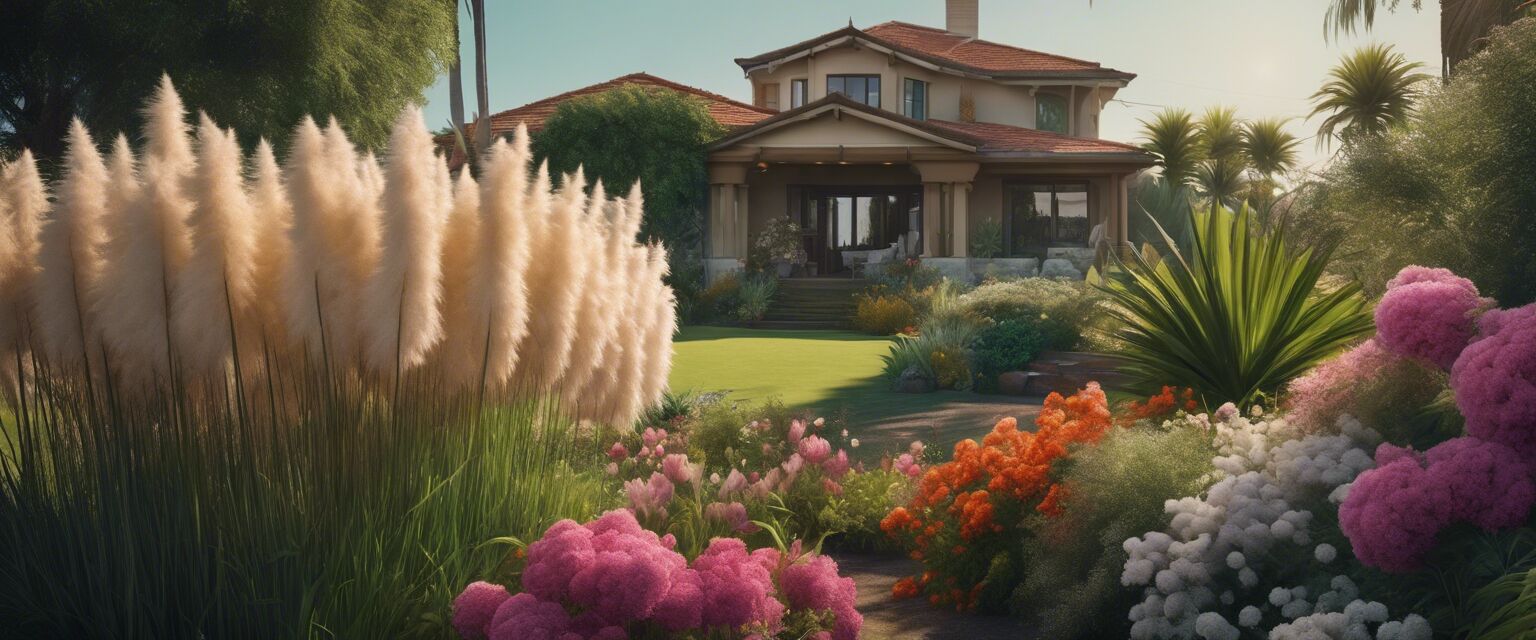
Caring for Pampas Grass
Key Takeaways
- Pampas grass is drought-tolerant and prefers full sun.
- Regular pruning enhances its aesthetic appeal.
- Protecting it from strong winds helps maintain its structure.
- Utilize well-drained soil for optimal growth.
- Consider seasonal care adjustments for better health.
Pampas grass is renowned for its stunning feathery plumes and easygoing nature, making it a favorite choice for home décor and landscaping. To keep your pampas grass healthy and beautiful, it's essential to follow some basic care tips and best practices. This guide will cover everything you need to know about caring for this striking perennial.
Understanding Pampas Grass
Pampas grass (Cortaderia selloana) is a versatile ornamental grass that thrives in various environments. Known for its elegant tall plumes that can reach heights of up to 10 feet, it adds a dramatic flair to gardens and indoor arrangements.

Features of Pampas Grass
| Feature | Description |
|---|---|
| Height | Typically grows between 6 to 10 feet tall. |
| Flowers | Feathery plumes appear in late summer to fall. |
| Sunlight | Prefers full sun, tolerating partial shade. |
| Soil Type | Thrives in well-draining soil; tolerates sandy and clay soils. |
| Watering | Drought-tolerant, requires minimal watering once established. |
Best Practices for Caring for Pampas Grass
1. Choosing the Right Location
When planting pampas grass, select a sunny location that offers enough space for its growth. Consider the following:
- Ensure the area receives at least 6 hours of sunlight each day.
- Avoid areas with heavy shade or excessive moisture.
- Consider spacing them about 6 to 10 feet apart to allow for their natural spread.
2. Soil Preparation
Pampas grass prefers well-draining soil. Consider the following preparations:
- Mix organic matter such as compost into the soil before planting.
- Test soil pH and adjust if necessary, aiming for neutral to slightly acidic conditions (pH 6.0 - 7.0).
- If your soil retains too much moisture, consider adding sand to improve drainage.

3. Watering Techniques
Once established, pampas grass is drought-tolerant and can survive with minimal watering. Hereâs how to water properly:
- Water deeply when the soil feels dry, especially during dry spells.
- Avoid over-watering; let the soil dry out between waterings.
4. Pruning Pampas Grass
Regular pruning can help maintain the grass's aesthetics and health:
- Cut back old foliage in late winter or early spring before new growth starts.
- Remove dead or damaged leaves to promote a clean look.
- Use gloves and make sure to keep the cuttings away from the base, which can encourage fungal growth.
5. Protecting from Weather Elements
Pampas grass is relatively hardy, but hereâs how you can keep it protected:
- If you live in an area with high winds, stake tall varieties or plant them near a windbreak.
- Cover with burlap if temperatures drop significantly.
Seasonal Care Tips
Understanding seasonal changes can help ensure your pampas grass thrives all year round. Hereâs a breakdown:
| Season | Care Tips |
|---|---|
| Spring | Prune any dead growth, apply fertilizer, and ensure it's well-watered. |
| Summer | Monitor for pests and water as needed; enjoy the blooms! |
| Fall | Cut back on watering as temperatures drop; time for a final pruning. |
| Winter | Protect from harsh winds; mulch around the base for insulation. |
Common Pests and Problems
While pampas grass is quite resilient, it can sometimes face issues:
- Pests like aphids can be a problem. Use insecticidal soap as treatment.
- Watch for rust fungus; improving airflow and avoiding overhead watering can help.
Pros
- Drought-tolerant and low maintenance.
- Adds visual interest to any landscape.
- Adaptable to various soil types.
- Beautiful plumes that are great for floral arrangements.
Cons
- Can spread quickly if left unchecked.
- Needs regular pruning for best appearance.
- May not be suitable for small yards.
Conclusion
Caring for pampas grass can be an enjoyable process that garners beautiful rewards. By following the tips outlined in this article, you can ensure that your pampas grass remains healthy and visually stunning. For more insights on pampas grass bunches and DIY kits, explore our product categories to find the best options for your home decor needs.
Tips for Beginners
Getting started with Pampas Grass
- Start with small plants to learn about their care.
- Keep a gardening journal to track growth and watering schedules.
- Network with fellow gardeners for advice and tips.





